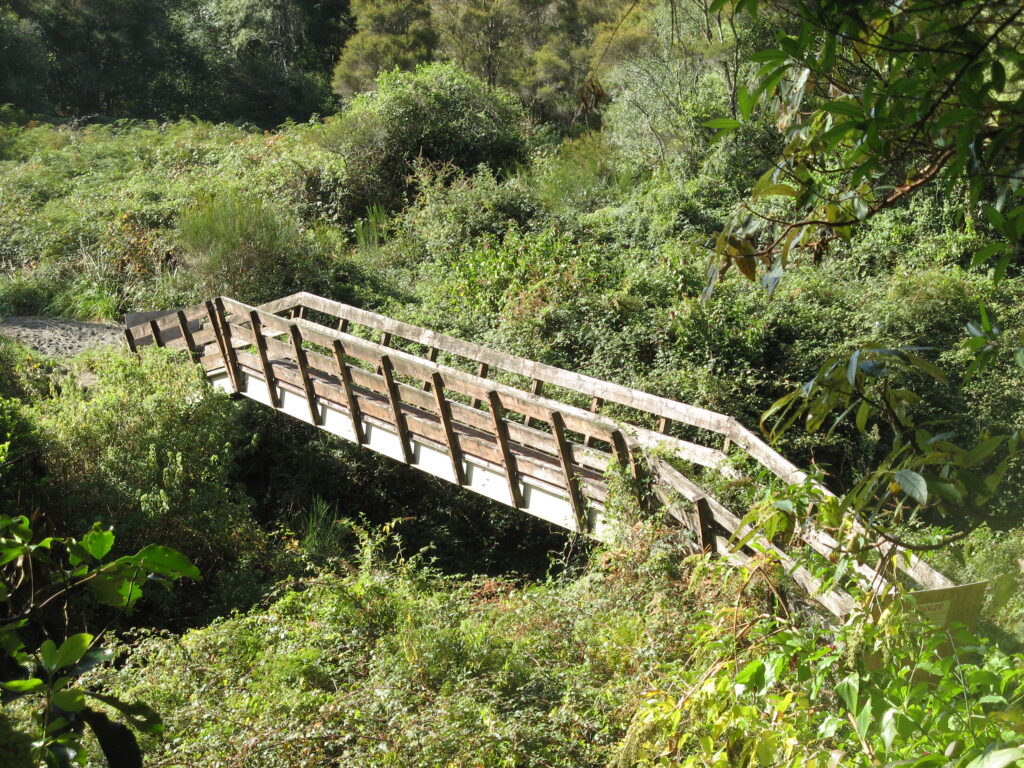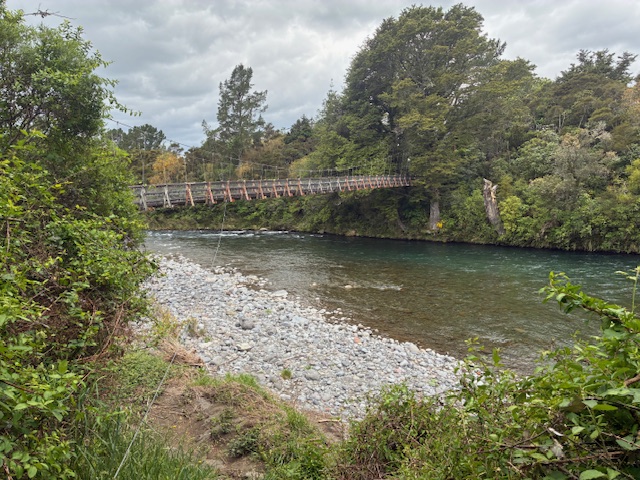
We understand both the Tongariro River swing bridges have been assessed as they are due for replacement soon, but cannot find any positive dates. It is surprising they have lasted this long. If you check out the anchor columns on the eastern end of the Koura Street bridge, you might be surprised to find two concrete telegraph poles lashed together. They did not have to qualify for a resource consent when they were erected 70 years ago. But they have survived two major floods and rebuilding twice since then.
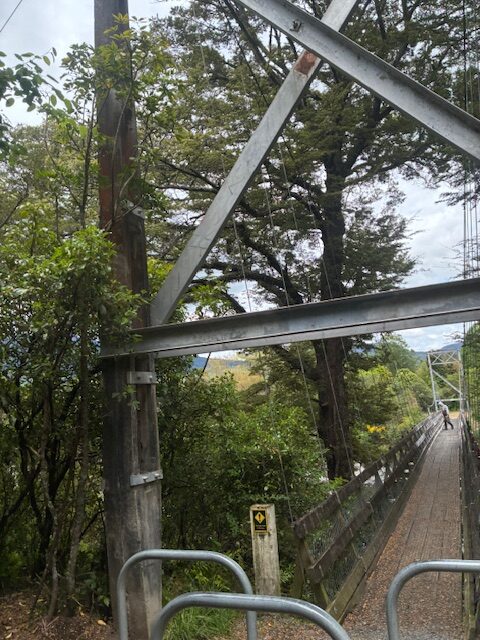
The peak flow of the 1958 Tongariro River flood was approximately 1,470 cumecs (cubic metres per second). This was the largest flood recorded on the river since flow measurements began in January 1957. A subsequent major flood in February 2004 reached a very similar peak flow of about 1,442-1420 cumecs.

Now the inevitable history lesson… This old report was posted by TRM over 20 years ago:
…The Koura Street and Red Hut Bridges were built about 70 years ago – construction started in 1955 – by the New Zealand Army. They have survived two major floods since, which would have swept away any normal footbridge built to Government MOW specifications.
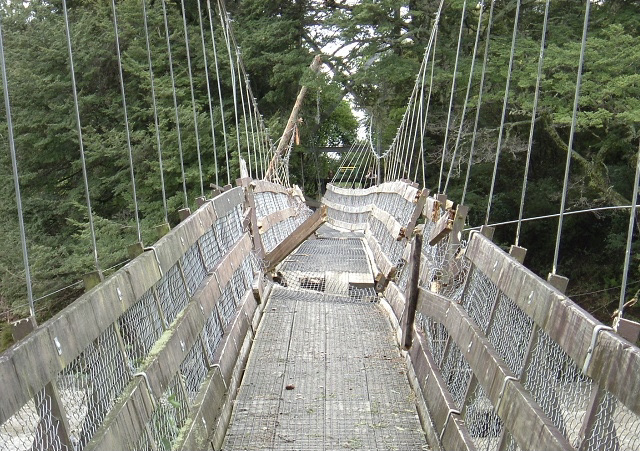
The 1958 flood scoured out both banks, and the concrete columns at each end collapsed. What was left of the footbridge lay in the torrent acting like a huge net collecting trees and debris threatening to pull the anchors out. It took two years to replace with a new bridge in 1960.

Then again in 2004, mother nature had another assault on the swing bridge(s) but they survived – a credit to their design and construction.
For the bridge’s 70th anniversary, anglers should acknowledge where credit is due – especially to TALTAC (Tongariro & Lake Taupo Anglers Club), which was responsible for convincing the Government to build the footbridges for anglers.
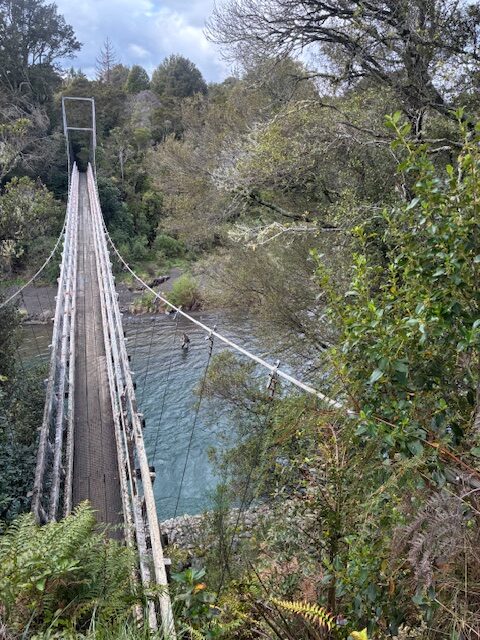
Red Hut Swingbridge above with bike ramps added below in 2022.

Other anglers’ access bridges have disappeared since. Below is a 2007 photo of the anglers bridge over the Poutu Stream, providing access from the old SH1 up to Blue Pool. It was removed by DOC to hide somewhere in the National Park, where they decided it was of more value to trampers.
